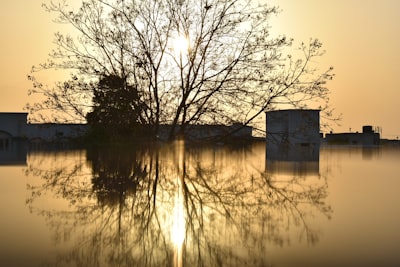Why Are Flash Floods So Deadly—And Increasingly Common in the U.S.?
In recent years, catastrophic flash floods, such as the tragic 2025 Texas Hill Country disaster, have reminded Americans that flooding is the nation’s No. 1 weather-related killer. In just minutes, tranquil streams become raging torrents, endangering entire communities, catching thousands off-guard, and racking up lives lost. So, what exactly makes flash floods so dangerous? How can you prepare—and why do experts warn flash floods may become even more common?
Understanding Flash Floods: The Rapid Threat
Flash floods are sudden floods caused by heavy rainfall, usually happening within six hours—with many forming in less than three. Unlike river floods that rise over days, flash floods offer little time for warning or escape. Waters can surge dozens of feet in under an hour, sweeping away cars, homes, and bridges. Some of the most tragic incidents, including recent events in Texas, Kentucky, and New York, unfolded overnight—emphasizing how quickly danger can strike.
Key risk factors for flash floods include:
- Heavy, short-duration rainfall (like summer thunderstorms or tropical storms)
- Urban areas with lots of pavement (leading to poor drainage)
- Steep hills or mountainous regions with fast runoff
- Previously saturated ground or wildfires that reduce soil absorption
Why Are Flash Floods the Leading Weather Killer?
Many people underestimate the deadly power of floodwaters. The National Weather Service reports nearly half of flood fatalities involve vehicles. Six inches of fast-moving water can knock an adult off their feet, while just 18 inches can carry away most cars. Driving through flooded roads may seem like a detour, but it’s often fatal.
Other contributors to high risk include:
- Lack of community warning systems
- Nighttime floods that strike while people sleep
- Fast-rising rivers like the Guadalupe River in Texas, which can climb dozens of feet in under an hour
Are Flash Floods Getting Worse? Climate Change and Urban Growth
Recent research suggests that climate change is increasing the frequency and intensity of extreme rainfall events. Warmer air holds more moisture, which means bigger downpours and more flash flooding risk. Meanwhile, expanding cities add more concrete and asphalt, reducing the land’s ability to absorb rainwater and creating hazardous runoff.
Emerging issues:
- More severe rainstorms in the Midwest, Southeast, and urban areas
- Higher stakes as more people move to flood-prone regions
- Strained emergency services and the need for better warning technology
How to Stay Safe During Flash Floods: Essential Tips
Preparation and quick action save lives. Here’s what experts recommend:
- Monitor Weather Alerts: Pay attention to local news and the National Weather Service. Know the difference between a flood watch (conditions possible) and flood warning (flooding is happening or about to).
- Never Drive Through Flooded Roads: "Turn Around, Don’t Drown." Even a few inches of water can sweep away your vehicle.
- Have an Evacuation Plan: Know your local flood zones, escape routes, and where you’d go for higher ground.
- Sign Up for Alerts: Many counties offer emergency text alerts—if your area doesn’t, urge local officials to implement warning systems.
- Stay Alert at Night: Flash floods often strike after dark; keep a NOAA Weather Radio by your bed.
FAQs: What People Are Searching About Flash Floods
Q: Can flash floods happen if it’s not raining where I am?
A: Yes—upstream rain can send torrents toward your area even if your skies are clear.
Q: Are flash floods only a rural or hill country problem?
A: No—urban areas are uniquely at risk due to poor drainage and lots of pavement.
Q: How many people die in floods each year?
A: In the U.S., an average of 127 people lose their lives annually, with some years much higher.
Key Takeaways: Stay Informed, Stay Safe
- Flash floods are fast, deadly, and increasingly common due to climate change and urbanization
- Pay attention to weather alerts and always avoid driving through floodwaters
- Support improvements in community warning systems and flood preparedness
Recommended Reading:
Don’t be caught off-guard—understand the risks, know the warnings, and protect yourself and your family from America’s No. 1 storm killer.

Comments
No comments yet. Be the first to comment!